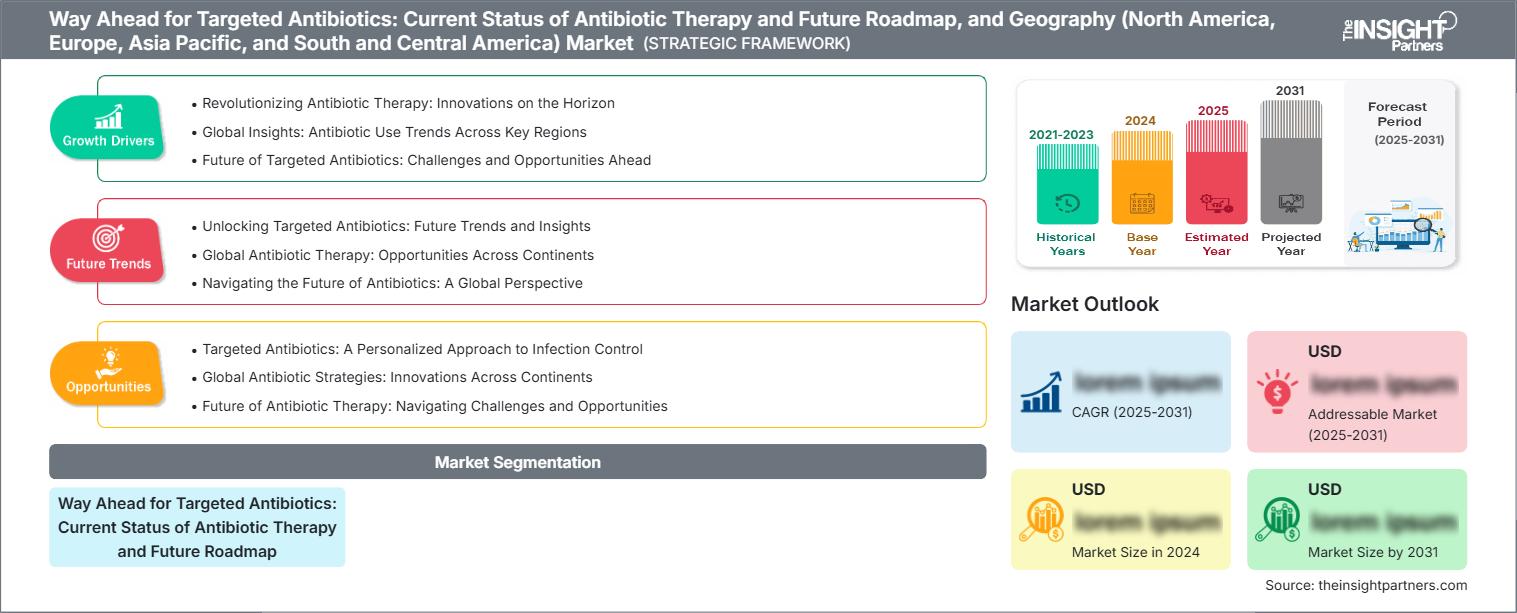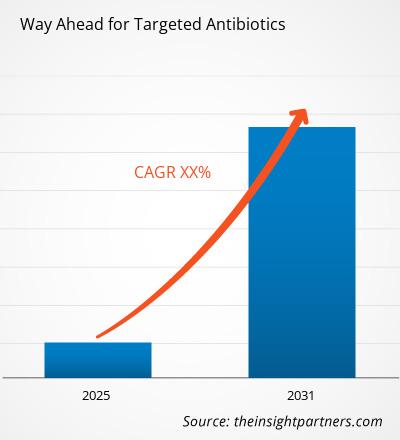تُعدّ المضادات الحيوية ركيزةً أساسيةً في الطب الحديث، ولها سجلٌ حافلٌ في الحدّ من عبء الأمراض المُعدية، وخفض الوفيات، بل واحتوائها. وقد أدّت القدرة على العلاج الفوري للعدوى دون الحاجة إلى تحديد المُسبّب إلى الحدّ من انتشارها، وفتحت آفاقًا جديدةً للطب الحديث، في مجالات الجراحة، وزراعة الأعضاء، والعلاج الكيميائي، ورعاية حديثي الولادة والأطفال. ومع ذلك، فإنّ جميع هذه الفوائد تُقلّل من الفوائد المذكورة، وغيرها الكثير، مما دفع منظمة الصحة العالمية إلى التحذير من احتمالية عصر ما بعد المضادات الحيوية، وما يرتبط به من عبءٍ ناجمٍ عن مقاومة المضادات الحيوية. ومع استمرار مقاومة المضادات الحيوية، من المتوقع أن تُسبّب العدوى المقاومة للمضادات الحيوية أكثر من 10 ملايين حالة وفاة سنوية، وأن يصل عبء التكلفة على الاقتصاد العالمي إلى 100 تريليون دولار أمريكي بحلول عام 2050.
تُعدّ إدارة مقاومة المضادات الحيوية واحتوائها نهجًا متعدد الجوانب سريريًا وتنظيميًا واقتصاديًا. وتتراوح هذه الخطوات بين تحسين الإطار التنظيمي، وضخّ الأدوية، وتطوير مضادات حيوية جديدة ضيقة الطيف وعلاجات بديلة، وتغيير أهداف العلاج، وتحفيز تطوير المضادات الحيوية الموجهة. ومن الجوانب الرئيسية لاستراتيجية مكافحة البكتيريا تطوير وتسويق المضادات الحيوية الموجهة، أي الأدوية المضادة للبكتيريا التي تستهدف نوعًا أو جنسًا معينًا. تناقش هذه الدراسة تحديات ومزايا هذا النهج، وتُسلّط الضوء على بعض التوصيات التي من شأنها المساعدة في تحديد المضادات الحيوية ضيقة الطيف والموجهة. لا تُعدّ هذه المراجعة تجميعًا شاملًا للمراجعات واتجاهات السوق، ولكنها تُعدّ بمثابة تسليط الضوء على بعض التطورات الحديثة والديناميكيات السائدة في مجال المضادات الحيوية الموجهة.
ستحصل على تخصيص لأي تقرير - مجانًا - بما في ذلك أجزاء من هذا التقرير، أو تحليل على مستوى الدولة، وحزمة بيانات Excel، بالإضافة إلى الاستفادة من العروض والخصومات الرائعة للشركات الناشئة والجامعات
مستقبل المضادات الحيوية الموجهة: الوضع الحالي للعلاج بالمضادات الحيوية وخارطة الطريق المستقبلية ، والتوزيع الجغرافي (أمريكا الشمالية، وأوروبا، وآسيا والمحيط الهادئ، وأمريكا الجنوبية والوسطى) السوق: رؤى استراتيجية

- احصل على أهم اتجاهات السوق الرئيسية لهذا التقرير.ستتضمن هذه العينة المجانية تحليل البيانات، بدءًا من اتجاهات السوق وحتى التقديرات والتوقعات.
يمكن أن تتمثل الاستراتيجيات الواعدة لمكافحة العدوى البكتيرية المقاومة في منع العدوى وخطر المقاومة الناتج عنها، وتجديد خط أنابيب المضادات الحيوية من خلال نشر مزيج من التدابير الاقتصادية والتنظيمية، وإبطاء خطر المقاومة من خلال الحفاظ على استخدام المضادات الحيوية المتاحة، وتطوير نهج جديد للعلاجات التي تهاجم الميكروبات لتقليل إمكانية الإصابة بالعدوى المقاومة، وتطوير المضادات الحيوية الخاصة بالأنواع وضيق الطيف، وتطوير العلاجات التي تستضيف أهدافًا من العوامل الميكروبية.
إن تحسين نظام الاستخدام لزيادة فائدة المضادات الحيوية المتاحة حاليًا هو بالفعل أفضل استراتيجية لاحتواء خطر المقاومة، ومع ذلك، فإن عدم وجود آلية تتبع واضحة المعالم وتوافر موارد موحدة يعيق إمكانات هذا النهج. يتمثل النهج البديل في تطوير مضادات حيوية جديدة كنهج مستهدف، وبالتالي مهاجمة العامل الممرض المسبب، وبالتالي يكون لها تأثير أقل أو حتى ضئيل على الميكروبات . غالبًا ما يُنظر إلى المضادات الحيوية الطيفية على أنها نهج عام وخشن - فهذه الأدوية لا تعالج العامل الممرض المسبب فحسب، بل تسبب أيضًا ضررًا واضحًا للميكروبيوم الآخر . وبالتالي، يمكن أن يكون لهذه العلاجات غير المستهدفة عواقب وخيمة من حيث تطور المرض في نهاية المطاف، ومن ثم تدعو إلى الحاجة إلى جيل جديد من المضادات الحيوية، والحاجة في نهاية المطاف إلى التحول لمعالجة هذه المخاوف. تشمل بعض المرشحين المحتملين الذين وصلوا مؤخرًا إلى مرحلة متأخرة من التطوير السريري (المضادات الحيوية المستهدفة الخاصة بالعامل الممرض) ريدينيلازول وأفابيسين وAR-101. وهناك بعض المرشحين قبل السريري الذين يمثلون علاجات محتملة للبكتيريا المقاومة.
الطريق إلى الأمام للمضادات الحيوية المستهدفة: الوضع الحالي للعلاج بالمضادات الحيوية وخارطة الطريق المستقبلية المستقبلية ، والتوزيع الجغرافي (أمريكا الشمالية، وأوروبا، وآسيا والمحيط الهادئ، وأمريكا الجنوبية والوسطى) رؤى السوق الإقليمية
قام محللو شركة "ذا إنسايت بارتنرز" بشرح شامل للاتجاهات والعوامل الإقليمية المؤثرة على مستقبل سوق المضادات الحيوية الموجهة: الوضع الحالي للعلاج بالمضادات الحيوية وخارطة الطريق المستقبلية ، بالإضافة إلى التوزيع الجغرافي (أمريكا الشمالية، وأوروبا، وآسيا والمحيط الهادئ، وأمريكا الجنوبية والوسطى) خلال فترة التوقعات. كما يناقش هذا القسم مستقبل سوق المضادات الحيوية الموجهة: الوضع الحالي للعلاج بالمضادات الحيوية وخارطة الطريق المستقبلية. المستقبلية ، والتوزيع الجغرافي (أمريكا الشمالية، أوروبا، آسيا والمحيط الهادئ، وأمريكا الجنوبية والوسطى) في أمريكا الشمالية، أوروبا، آسيا والمحيط الهادئ، الشرق الأوسط وأفريقيا، وأمريكا الجنوبية والوسطى.
مستقبل المضادات الحيوية المُستهدفة: الوضع الحالي للعلاج بالمضادات الحيوية وخارطة الطريق المستقبلية، ونطاق تقرير السوق (أمريكا الشمالية، وأوروبا، وآسيا والمحيط الهادئ، وأمريكا الجنوبية والوسطى)
| سمة التقرير | تفاصيل |
|---|---|
| حجم السوق في عام 2024 | XX مليون دولار أمريكي |
| حجم السوق بحلول عام 2031 | XX مليون دولار أمريكي |
| معدل النمو السنوي المركب العالمي (2025 - 2031) | XX% |
| البيانات التاريخية | 2021-2023 |
| فترة التنبؤ | 2025-2031 |
| القطاعات المغطاة | الطريق إلى الأمام للمضادات الحيوية المستهدفة: الوضع الحالي للعلاج بالمضادات الحيوية وخارطة الطريق المستقبلية |
| المناطق والبلدان المغطاة | أمريكا الشمالية
|
| قادة السوق وملفات تعريف الشركات الرئيسية |
|
مستقبل المضادات الحيوية المُستهدفة: الوضع الحالي للعلاج بالمضادات الحيوية وخارطة الطريق المستقبلية، والتوزيع الجغرافي (أمريكا الشمالية، وأوروبا، وآسيا والمحيط الهادئ، وأمريكا الجنوبية والوسطى). كثافة اللاعبين في السوق: فهم تأثيرها على ديناميكيات الأعمال.
مستقبل المضادات الحيوية الموجهة: الوضع الحالي للعلاج بالمضادات الحيوية وخارطة الطريق المستقبلية، والتوزيع الجغرافي (أمريكا الشمالية، وأوروبا، وآسيا والمحيط الهادئ، وأمريكا الجنوبية والوسطى). يشهد السوق نموًا سريعًا، مدفوعًا بتزايد طلب المستخدمين النهائيين نتيجةً لعوامل مثل تفضيلات المستهلكين المتطورة، والتقدم التكنولوجي، وزيادة الوعي بفوائد المنتج. ومع ازدياد الطلب، تعمل الشركات على توسيع عروضها، والابتكار لتلبية احتياجات المستهلكين، والاستفادة من الاتجاهات الناشئة، مما يعزز نمو السوق.

- استشراف الطريق للمضادات الحيوية المستهدفة: الوضع الحالي للعلاج بالمضادات الحيوية وخارطة الطريق المستقبلية، والتوزيع الجغرافي (أمريكا الشمالية، وأوروبا، وآسيا والمحيط الهادئ، وأمريكا الجنوبية والوسطى) نظرة عامة على أبرز اللاعبين الرئيسيين في السوق
يُعتقد أن الانهيار الواضح في مسار البحث والتطوير في مجال المضادات الحيوية ناتج عن تحديات اقتصادية وتنظيمية، والتي سيتم مناقشتها بمزيد من التفصيل في هذا التقرير. ويُوصى بأن يتمثل الحل للتغلب على هذه التحديات في تحسين ضبط ومواءمة النهجين التنظيمي والاقتصادي لتطوير المضادات الحيوية. ويمكن أن تُمثل الشراكات بين القطاعين العام والخاص خطوةً محتملةً لمواءمة تركيز البحث والتطوير مع الاحتياجات غير الملباة.
يمكن للرؤية التنظيمية الجديدة والنهج المتبع، مثل مبادرة "أدوية المضادات الحيوية محدودة السكان" التي أطلقتها جمعية الأمراض المعدية الأمريكية، أن تُمكّن من اعتماد الأدوية التي تُجرى في تجارب سريرية صغيرة وغير مكلفة تُركز على عدوى مُحددة تُسببها عوامل شديدة المقاومة. لذا، يُوصى بمثل هذه المبادرات لتمكين الأطباء من امتلاك المضادات الحيوية وتوفير حوافز مالية من خلال خفض تكلفة التجارب السريرية. يناقش هذا التقرير بشكل شامل الوضع الحالي والمستقبلي لسوق المضادات الحيوية واسعة وضيقة الطيف بشكل عام. كما تُقدم هذه الدراسة لمحة عن الاستراتيجيات الرئيسية التي طورتها وطبقتها الحكومات والأطباء وشركات الأدوية في تطوير المضادات الحيوية المُستهدفة. وتُختتم الدراسة بالتدابير المُتخذة للحد من خطر تفاقم مقاومة المضادات الحيوية، وتوصيات تحليلية من حيث النهج الاقتصادية والتنظيمية والسريرية التي يُمكن اتباعها في هذا المجال.
- التحليل التاريخي (سنتان)، سنة الأساس، التوقعات (7 سنوات) مع معدل النمو السنوي المركب
- تحليل PEST و SWOT
- حجم السوق والقيمة / الحجم - عالمي، إقليمي، بلد
- الصناعة والمنافسة
- مجموعة بيانات إكسل
التقارير الحديثة
شهادات العملاء
سبب الشراء
- اتخاذ قرارات مدروسة
- فهم ديناميكيات السوق
- تحليل المنافسة
- رؤى العملاء
- توقعات السوق
- تخفيف المخاطر
- التخطيط الاستراتيجي
- مبررات الاستثمار
- تحديد الأسواق الناشئة
- تحسين استراتيجيات التسويق
- تعزيز الكفاءة التشغيلية
- مواكبة التوجهات التنظيمية




















 احصل على عينة مجانية ل - مستقبل المضادات الحيوية الموجهة: الوضع الحالي للعلاج بالمضادات الحيوية وخارطة الطريق المستقبلية، والتوزيع الجغرافي (أمريكا الشمالية، وأوروبا، وآسيا والمحيط الهادئ، وأمريكا الجنوبية والوسطى)
احصل على عينة مجانية ل - مستقبل المضادات الحيوية الموجهة: الوضع الحالي للعلاج بالمضادات الحيوية وخارطة الطريق المستقبلية، والتوزيع الجغرافي (أمريكا الشمالية، وأوروبا، وآسيا والمحيط الهادئ، وأمريكا الجنوبية والوسطى)